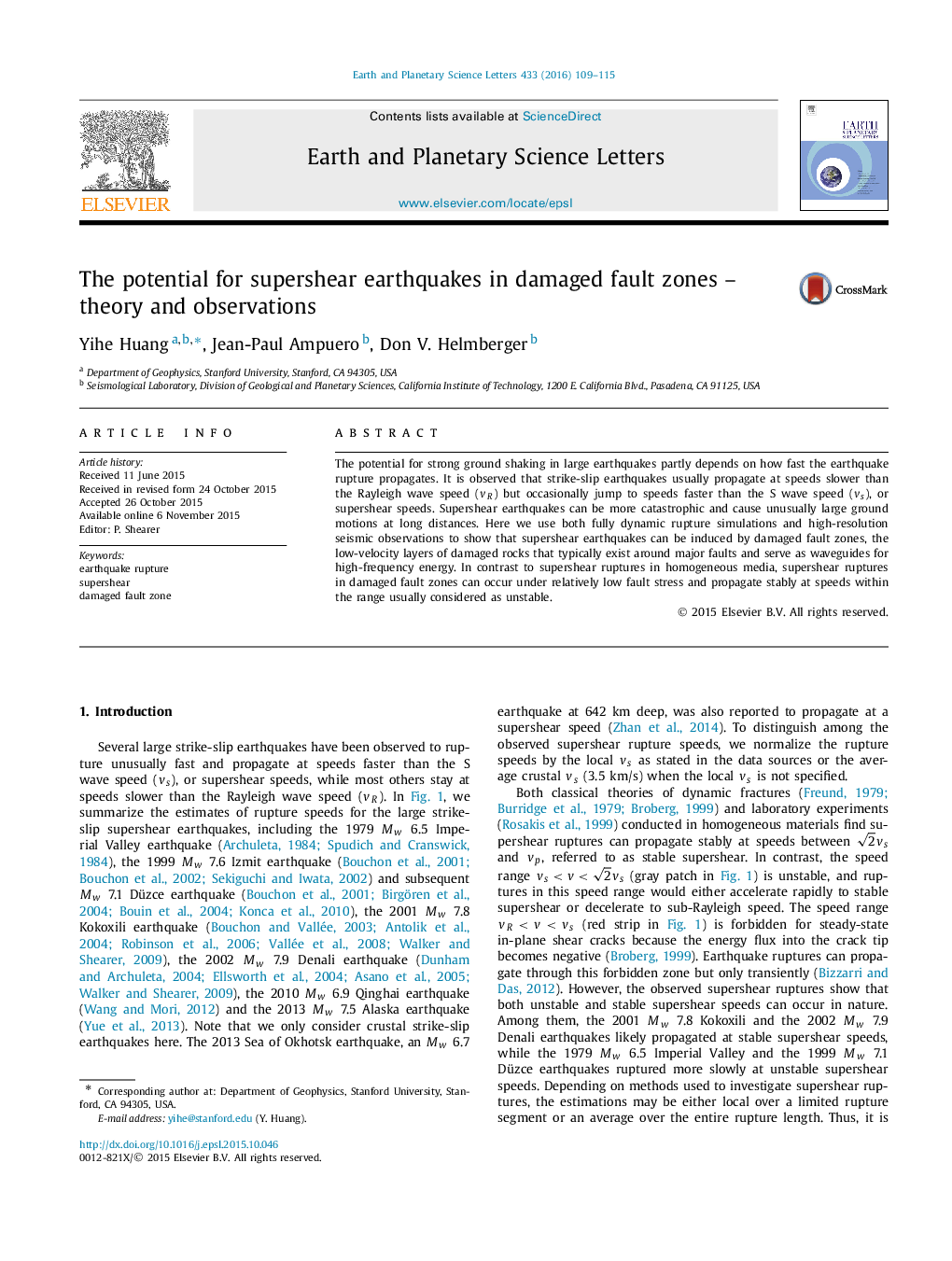| Article ID | Journal | Published Year | Pages | File Type |
|---|---|---|---|---|
| 6427689 | Earth and Planetary Science Letters | 2016 | 7 Pages |
â¢We model supershear rupture in damaged fault zones using dynamic rupture simulations.â¢We image the fault zone structure by analyzing P-wave spectra and Vp/Vs ratios.â¢Supershear ruptures in damaged fault zones can occur under relatively low fault stress.â¢They can propagate stably at speeds considered as unstable in homogeneous media.â¢We observe a damaged fault zone around an unusually fast earthquake in Big Bear, CA.
The potential for strong ground shaking in large earthquakes partly depends on how fast the earthquake rupture propagates. It is observed that strike-slip earthquakes usually propagate at speeds slower than the Rayleigh wave speed (vR) but occasionally jump to speeds faster than the S wave speed (vs), or supershear speeds. Supershear earthquakes can be more catastrophic and cause unusually large ground motions at long distances. Here we use both fully dynamic rupture simulations and high-resolution seismic observations to show that supershear earthquakes can be induced by damaged fault zones, the low-velocity layers of damaged rocks that typically exist around major faults and serve as waveguides for high-frequency energy. In contrast to supershear ruptures in homogeneous media, supershear ruptures in damaged fault zones can occur under relatively low fault stress and propagate stably at speeds within the range usually considered as unstable.
